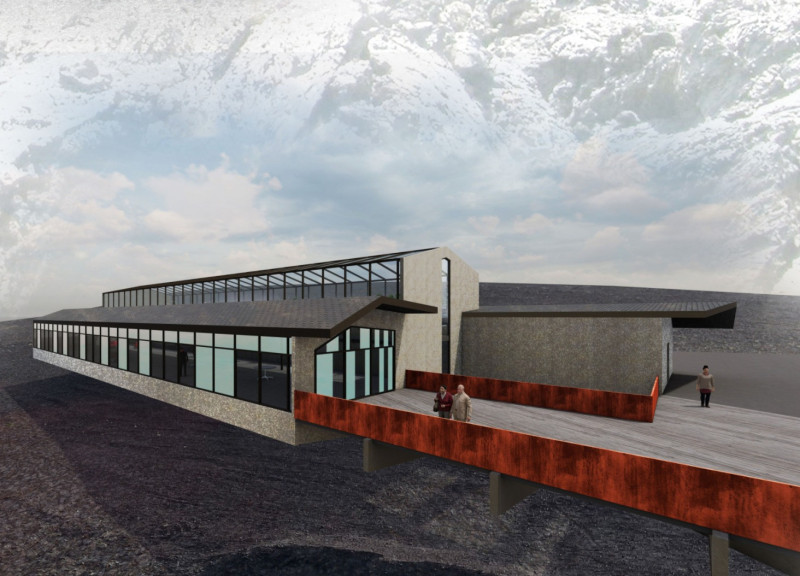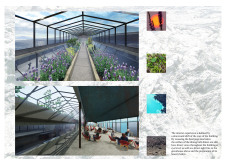5 key facts about this project
The design emerges from a rugged grey pasture, connecting function with its natural surroundings. It is oriented along the east/west axis, allowing for maximum sunlight exposure for the greenhouse at its core. This thoughtful placement provides clear views towards the south, bridging the architecture with the Hvefjall Volcano and the Myvatn Nature baths. The overall design concept reflects a commitment to blending indoor and outdoor experiences.
Design and Materials
High iron glazing panels define the south elevation, optimizing natural light while reflecting the nearby waters of the nature baths. This aspect reinforces the visual relationship between the structure and its landscape. Corten steel guardrails complement the design, echoing the reddish tones found in volcanic rock and tying the building to its environment.
Sustainability Focus
A focus on sustainability is apparent throughout the design. The use of four concrete columns with pile caps, combined with necessary retaining walls for parking, minimizes disruption to the existing landscape. This approach helps maintain the integrity of the natural environment while providing essential services to visitors.
Spatial Organization
Inside the Event Dining Hall, a key feature is the downward shift of the core, placing the food preparation area below the dining surface. This design choice allows guests to see the greenhouse above while also watching food being prepared. This setup enhances the dining experience by promoting a connection between the food and where it comes from.
Structural Composition
The building makes use of prefabricated components for stability and efficiency. The floor system consists of prefabricated steel trusses and hollow core concrete slabs, ensuring a strong foundation while allowing quick assembly. Steel columns support the roof and walls, designed to accommodate glazing and cladding. The exterior is wrapped in galvanized steel panels, creating an impression of a mass that appears to float along the hillside, emphasizing its connection to the landscape.






















































